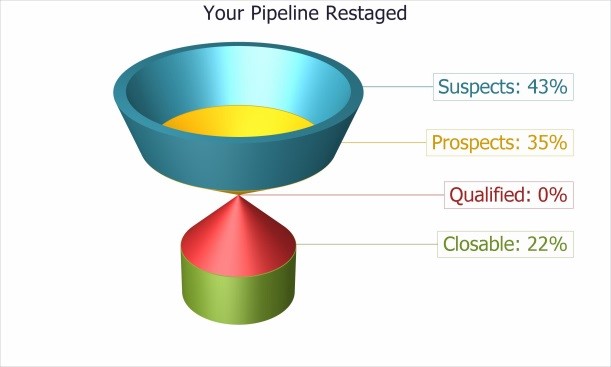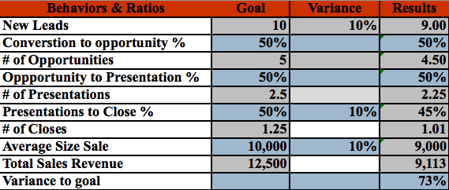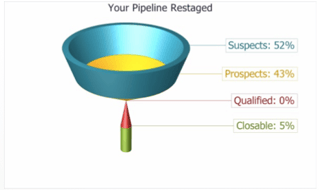According to HubSpot, companies with well-optimized sales pipelines reported a 28% higher revenue growth rate compared to those with poorly managed pipelines. So why is it that many sales leaders default to coaching the deal at hand and do not consistently have sales pipeline management sessions with their people? These sessions should begin with a broader view of the opportunities each salesperson has in their pipeline, with a focus on several key metrics so that managers can compare and track how the deals are improving as they coach their people. Certainly, effective coaching is an essential part of sales pipeline management, but it starts with a review of key metrics from the pipeline.

Most companies use a CRM to monitor the opportunities in their sales pipeline. Some of the metrics that we recommend sales managers consistently review with their salespeople include:
- Number of qualified leads
- Conversion rates for key sales process steps
- Close rates
- Average deal size
- Sales cycle length
Effective sales pipeline management involves setting specific times to review these key metrics with salespeople and coaching them for skill improvement. Ideally, a scorecard is established that allows a sales leader to track improvement as they review these metrics quarterly with their team. This discipline should not be overlooked and remains a key differentiator for highly successful coaches. If a sales manager does not know the quality of their pipeline, how can they help their people improve, and how can they forecast business for the company?
Assuming these metrics are available, here are some things to look out for in sales pipeline management sessions, with the end goal of improving pipeline quality and coaching the sales skills of your team.
Beware of Stuffed Pipelines
Having a “fat pipeline” can result from an overly optimistic advisor or relationship manager. They call on a prospect and come back thinking, “We really hit it off! They really liked what we can do... We have a LOT we can help them with.” Their deceptively full pipeline may give the salesperson comfort because it looks like they have plenty of opportunities, but in fact, it may be very misleading in terms of what will close. In other words, many of those deals in the pipeline are not properly qualified.
A sales leader plays a critical role in managing this problem with their coaching. The skill of asking great questions is essential. Tone and tonality are of paramount importance, and they must be firm and helpful. Questions like:
- What did you hear the customer say that leads you to believe they will be a great customer for us?
- When you asked them about the impact of not fixing this problem, what did they say?
- Who else in their organization will be impacted if they switch providers?
- What did they say when you asked about their decision-making criteria?
- When is the last time they chose a supplier that wasn’t the lowest cost?
- How much is in their budget to make this problem go away?
- When you asked them, “How do you envision working with us,” what was their response?
- How did they choose their current provider?
By asking great questions, sales managers coach their people by example. The questions listed above are the type of questions salespeople should be asking the prospect. Coaching sessions are similar to a sales call in nature. By asking great questions of their team, leaders find out where their people need to be coached. If they hear a salesperson say, “I didn’t ask that question” during their pipeline discussions, they need to find out if the salesperson is unable to ask those questions (they need more sales training) OR if they are unwilling to ask those questions.
During sales pipeline management sessions, as managers review and discuss the metrics, it becomes clear if the salesperson is prospecting enough and regularly finding opportunities. Sales managers will know if their team understands that prospecting is a consistent effort necessary for them to reach their sales goals. Coaches can guide them on how to consistently make calls, ask for introductions, and network among their target prospects.
It’s healthy to “flush” a pipeline regularly. Opportunities should move through or out of the pipeline continually. If a relationship manager wants to cling to an opportunity and defend keeping it in their pipeline, it is probably because they have nothing else to take its place. Coach them, encourage them, and challenge them.


.jpg?width=1920&name=board-game-businessman-challenge-1040157%20(1).jpg)
 Figure 1
Figure 1


